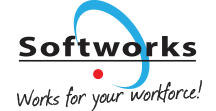We all know that flexible working arrangements bring many positive benefits to an employee’s life including a better work/life balance, greater job satisfaction, more autonomy, increased energy, creativity, motivation and morale. Flexible working gives employees greater ownership and control of their own time and working hours enabling them to manage their responsibilities outside of work. This can in turn reduce stress and anxiety for employees, who are struggling to balance their busy lives.
For a long time employers viewed flexible working as simply an “employee perk” or something used by working mums, who fancied a few hours out of the home and a bit of “pin money” doing “mummy jobs”. There was little understanding or interest in exploring the true benefits of offering flexible working and how these arrangements could be used to drive business goals and objectives.
Many employers were happy to sit on the fence, wondering will this “new fad” take off, while simultaneously, employees were embracing flexible working arrangements and actively seeking out employers who could offer them a better work/life balance. It’s pretty clear by now that flexible working is no fad, it’s a trend that is set to continue, with many countries now legislating for it. If you are still sitting on the fence, it’s time to jump off and get on board. If it is introduced as part of your overall business strategy it can make a major contribution to your business and in turn your bottom line.
Types of flexible working arrangements
First off, let’s look at the many types of flexible working arrangements. As every organization is different, a wealth of options has emerged over the years. We have set out below some of the most popular arrangements.
- Part-time: Working less than the normal hours, less hours in a day or less days in a week.
- Flexitime: Also known as flexi-time, flex time, flex scheduling or the implementation of a flexi system. Generally includes core working hours that must be worked by employees, as well as flexible working hours where employees can come and go as they please.
- Annualized hours: Employee hours are worked out over a year rather than a week/month. Employees have to work a certain number of hours over the year but they have some flexibility about when they work.
- Compressed hours: Employees work agreed hours over fewer days.
- Staggered hours: Different starting, break and finishing times for employees in the same workplace.
- Job sharing: Sharing a job designed for one person with someone else.
- Remote Working: Telecommuting, working from home, virtual.
With such a wide range of options available it’s possible to find an option that can meet both your employees’ needs and your business goals and objectives.
The Rise of Flexible Working
In recent years we have seen a huge increase in the use of flexible working due to improvements in communications and information technology. Employees don’t necessarily need to be in their office every day of the working week. People can now work from home on a regular basis whilst remaining in touch with the office. Furthermore, there is an increased demand for flexible working with employees seeking flexibility over both their time and space. They do not want fixed hours, but instead prefer to choose the hours they work. For many young workers, flexible working is now considered the norm rather than the exception.
At the same time, organizations’ demand for flexible working has also increased. With businesses now having to meet the 24/7 customer need for their services, there is a demand for flexible working. The recession has drastically changed the nature of work, reducing the number of full-time jobs and causing many organizations to rely on part-time and temporary staff, assigning them to flexible working schedules. Some have sought to optimise the use of organizational resources such as office space, computers and desks through shift work and working from home.
Benefits of Flexible Working Arrangements
Leading organizations have come to realise that there are solid grounds and very tangible benefits to offering flexible working arrangements. I have set out below some of the frequent business and financial benefits cited by organizations.
Business benefits
|
Financial benefits
|
How to use flexible working arrangements strategically
As every business is different, simply knowing the benefits is not enough. In order for each business to achieve their unique business goals, it’s essential to plan how they will use flexibility strategically and deliberately within their overall business purpose and objectives. Flexible working needs to have a clear, coordinated and widely understood goal behind it, otherwise it will be merely a programme or policy that sounds good, but hasn’t permeated its way into the day to day business. This requires dedicating time and resources to figure this out and come up with a coordinated cultural change process. A process that clearly defines your unique business rationale, for greater flexibility in your organization’s working arrangements.
Introducing Flexible Working Arrangements
Flexible working will not work for all roles, companies or activities therefore your strategy needs to be driven by the unique structure of your organization. If used properly it can lead to positive and profitable outcomes for your business including:
- Cost Savings – Businesses that recognise work is a resource rather than a place you go to are already making savings by adopting flexible working practices.
- Increased productivity and performance – By creating an environment where employees have higher levels of satisfaction and motivation, productivity also increases, which has a positive impact on the bottom line.
- Attracting and retaining a talented workforce – In order to continue to attract, retain and develop talent, businesses need to understand what drives their workforce. Modern workers are increasingly expecting more when it comes to balancing work and family life.
The Future is Flexible Working
In order to attract and retain top talent, businesses need to be able to respond to employees demand for non-full-time working hours and/or flexible working time schedules that will suit their chosen lifestyles and to balance work and family life. Recent research from PwC, the London Business School and the University of Southern California reveals that what may have attracted potential employees in the past – high pay, bonus schemes and rapid promotion – is not what the millennial generation sees as key priorities today. [1] They polled over 44,000 workers born between 1980 and 1995 (the so-called Generation Y) in 18 countries about their attitudes to work, and found that this very significant portion of the workforce tended to value a sustainable work-life balance and flexibility over financial rewards. In effect, this means that the incentive of high earnings is no longer the driving force. For employers, it indicates that a shift in attitude towards the 9 to 5 that will mean that workers may have greater loyalties to organizations that appreciate their personal commitments.
Summary
Ultimately, flexible working arrangements will need to fit into your organization’s strategic workforce plan. Considering the talent shortage in many countries and the ongoing pressure to attract more young people into the workforce, while retaining the knowledge and expertise of older workers, flexible working arrangements will be critical to your workforce strategy now and for the future. If you are introducing a flexible working strategy you should make sure that it is given the time and thought, associated with implementing any new strategy into the organization. Planning should include members of the management team, from the top, down. If management are not convinced that flexible working can benefit the bottom line and improve competitiveness, the strategy will not work. It is a fundamental principal of flexible working that the needs of the business are met.
We have also published a free to download White Paper on this topic that includes working case study examples. You can download via this link
[1] https://www.pwc.com/en_GX/gx/hr-management-services/pdf/pwc-nextgen-study-2013.pdf









